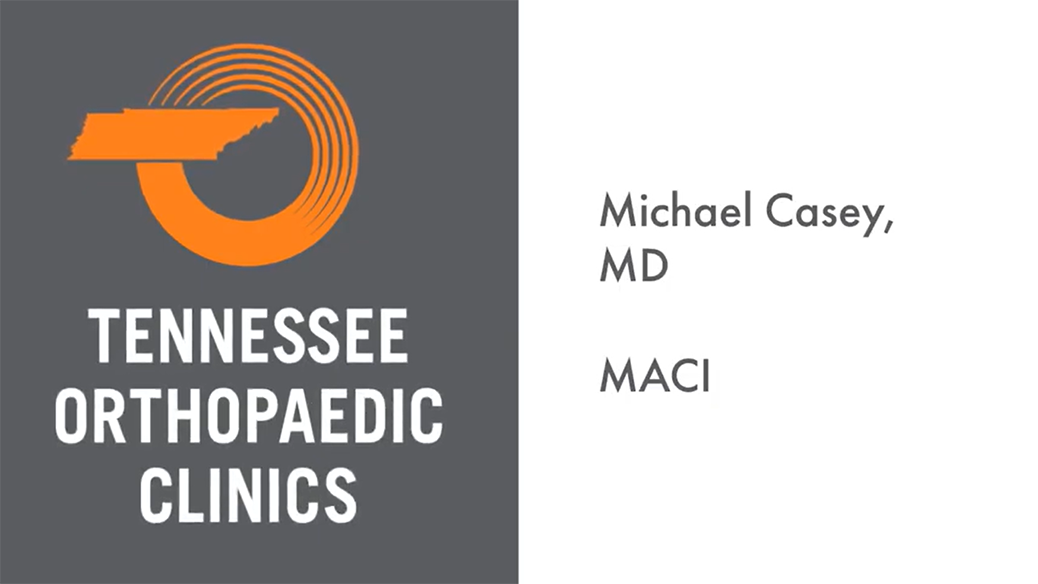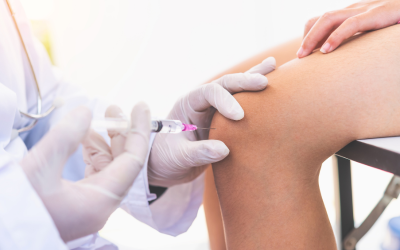Michael T. Casey, Jr. M.D., a Board Certified / Fellowship Trained Surgeon at Tennessee Orthopaedic Alliance, explains who is a good candidate for spinal injections?
MACI
What does MACI stand for?
It stands for Matrix Autologous Chondrocyte Implantation, and it’s a big fancy term for just means taking cells out of your knee joint and we can basically expand those into millions of cells to put them back in the knee to take care of a defect of the cartilage.
Who is the patient?
Typical age is anywhere from adolescence, even teenagers sometimes, up to close to 50. It’s not a cure for arthritis, but it is a way for men and women or even kids sometimes who’ve had defects or injuries to their knee or some early wear in the joint, a way of fixing those defects.
Is it a genetic defect?
It can. Some people are more prone to have their cartilage wear down than others, and sometimes it can be just an injury. A very specific injury.
What are the symptoms of damaged cartilage?
Pain, swelling, sometimes catching, grabbing type sensations within the knee. It can be activity related, so it may not bother them too much just walking around, but when they exercise or if they run or do other sporting activities, that their knee will swell and be painful.
How does it work?
You go in with a scope with a camera and you’re taking care of whatever issues are there, and you take a little tiny biopsy of the tissue. We actually send that to a lab with a little tiny biopsy of their cartilage. Then we can turn it into about 50 million cells per square inch, and then at that point we take that, it’s like a layer of tissue, and we take that and we can put that back into their knee. That fills in the defect where their cartilage injury is.
Recovery: Stage One
For the first process of just taking the cells, the biopsy, it’s a 20 minute day surgery procedure, so it’s no real downtime, back on your feet walking right away.
Recovery: Stage Twp
After the second stage, when we put the cells back in, then there is a period of rehab. Kind of a prolonged period, where you’re on crutches potentially sometimes up to six weeks. Now, you’re up and getting around. You can put some pressure on it, you can bend it, you can move, and we start a whole very, very structured rehabilitation process at that point. Most people are getting back to their day to day activities fairly frequently. It’s getting back into sports that can take a little bit of time.
Does it have a high success rate?
Success has been very, very good. It’s typically been used too as kind of what we call a salvage procedure, when other procedures have failed. So we’re always getting kind of the worst of the worst patients with these, but this [inaudible 00:03:04] came out in the late eighties, 1980s, and so the long term data from it is very, very good. It’s actually, the long term data has been better than most other procedures that have been out there in regards to cartilage regeneration.
Can any orthopedic doctor do this procedure?
It’s pretty complicated. There’s a lot of extra training that’s involved with it. There’s actually a special certification that you have to go through to do it, and most people just don’t have the time or patience to do it. But it’s something I’ve been doing now, my first case was in 2006, so I’ve been doing this a while now and something I’ve become very passionate about. I like being able to provide options to patients that otherwise wouldn’t have those, and that’s where I’ve seen the real benefit from it.





